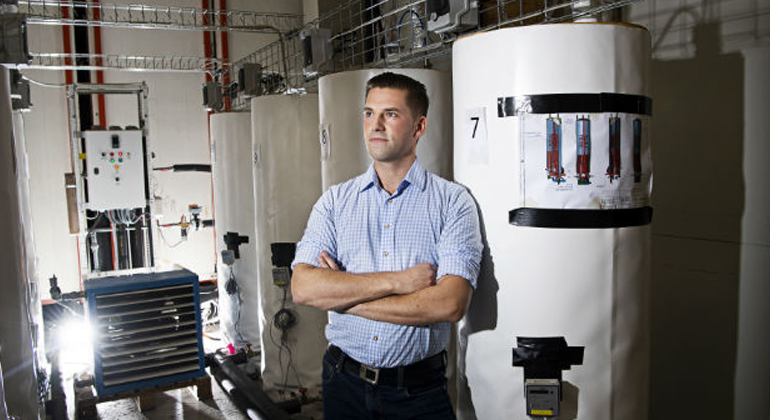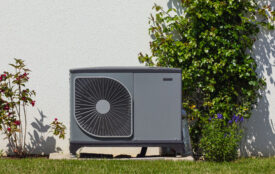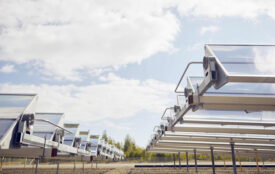Energy for future heating systems can be stored in salt
Solar thermal collectors, combined with the storage of energy in salt batteries, can cover 71 percent of the heating demand in houses.
A container of liquid salt, supercooled sodium acetate trihydrate, can store energy from renewable energy sources without losing energy. New research from DTU shows that salt batteries can solve the challenge of providing short and long-term storage of energy from solar collectors and wind energy. Experiments have shown that a solar heating system with 22 m² solar collectors, a hot water tank and salt batteries can cover up to 71 percent of the heat demand in an energy-efficient three-person house in Danish climate.
“We see great perspectives in the salt-battery, which will help to solve the problem we have with large seasonal fluctuations in the production of solar and wind energy throughout Central and Northern Europe. In our demonstration system, salt batteries were able to store heat both in the short and long term. This means that energy from solar collectors can be stored and cover most of the energy consumption in houses, while the remaining 29 percent in the winter season can come from wind energy or other electricity generation, ”says Gerald Englmair PhD at DTU Civil Engineering.
In Europe, buildings account for 40 percent of the total energy consumption. Home heating is responsible for most of this share, and if the member states have to live up to the EU’s goals for energy efficient housing. Thus, new technological solutions with energy storage with reduced heat loss are essential.
The technology of salt batteries is based on the phenomenon that salt from acetic acid, sodium acetate trihydrate, which has a melting point of 58 °C, can supercool in liquid state to room temperature after being heated above 78 °C. The principle is known from the small plastic bags with liquid salt that can be used to keep fingers or toes warm in cold weather. When you press a metal disc and release a crystal from its surface, the liquid will crystallize and in the process heat up to 58°C.
The release of energy during cool-down and additionally on-demand from the crystallized liquid can be used in homes to heat domestic water or radiators, which do not need to be heated to particularly high temperatures. The formation of crystals occurs in seconds, with the entire container transformed into a massive block of crystal. Once the heat is released, the process of recharging can be repeated endlessly and limited only by the durability of the plant.
Built by standard components
Experiments with combined short and long-term storage of energy in salt batteries were carried out in a PhD project by Gerald Englmair. The research concluded that flat and cylindrical stores, built with steel, can be applied in solar heating systems. The addition of thickening agents proved to be suitable to stabilize sodium acetate trihydrate in flat prototype units, whereas in cylindrical units SAT composites with polymeric solutions were identified to have better heat transfer properties. Furthermore, his work shows that more research is needed regarding dimensioning of heat exchangers in stores and system application in different climates.
Thus, the next step is to develop inexpensive cylindrical stores. Prototypes in different design and with different devices for controlled activation of salt solidification are currently tested at the DTU Civil Engineering. Appropriate storage components such as shell-and-tube heat exchangers were manufactured by a German company for optimized heat transfer. A prototype using standard water tank components was manufactured by NILAN A/S in Denmark. This design is a tank-in-tank unit that utilizes thermal stratification in the outer tank for domestic water use. It stores 27 kWh of heat between 25 °C and 90 °C, of which 11.5 kWh can be preserved loss-free at room temperature.
“We want to assist manufacturers in their efforts to develop efficient heat storages with smart controllers used by different renewable energy systems. Such heat stores will be suitable for the future energy system because they are flexible and can utilize periods of cheap electricity and a high proportion of renewable energy. I believe that this technology will be ready for commercial use within the next five years, ”says Associate Professor Simon Furbo, who has been the supervisor of Gerald Englmair’s PhD project on salt batteries.








